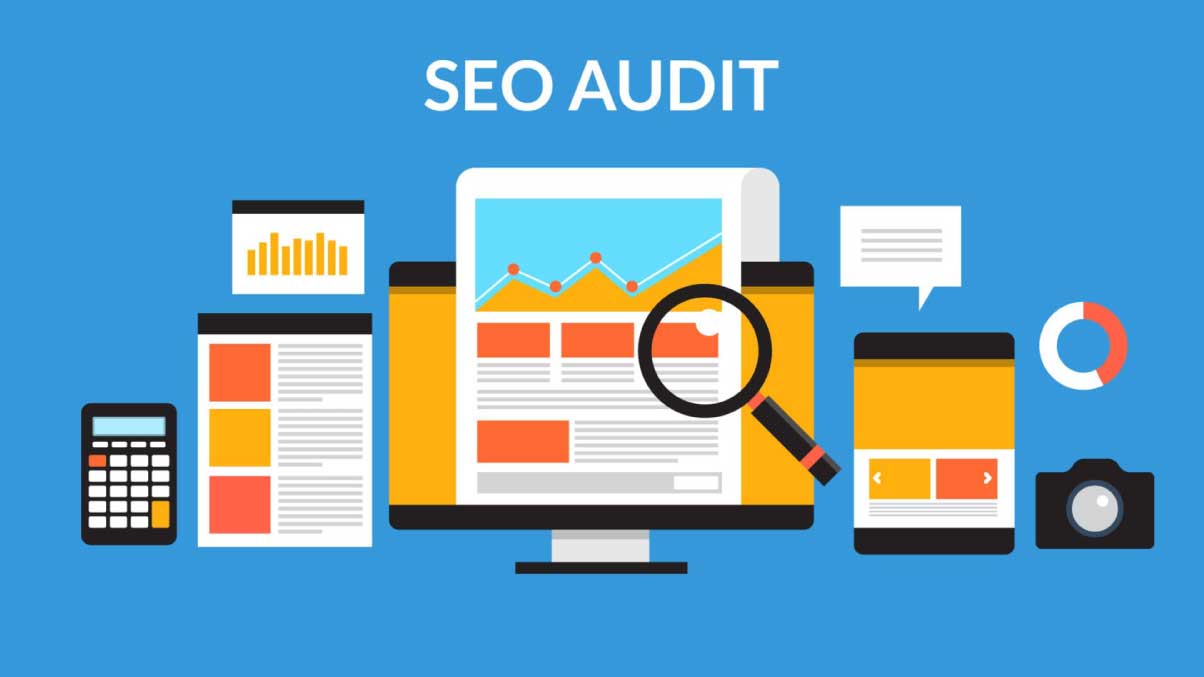
Estimated reading time: 4 minutes
Skip to the relevant section
What Is An SEO Audit, Exactly?
An SEO audit assesses a website’s ability to rank in search engine results pages (also known as SERPs). The better that a search engine can read your website, the higher it will appear in the rankings. We like to think of an SEO audit as a report card for a website’s ‘Googleability’.
There are a number of points to consider when conducting an SEO audit. These points can be broken down into two main categories, on-page SEO elements and off-page elements both of which are covered below.
What’s included in an SEO Site Audit – Steps to review when conducting an SEO audit
- On-page SEO audit elements
> HTTP to HTTPS redirect in place
> Mobile-Friendly
> Core Web Vitals Review & Actions
> Page Speed Insights
> 404 pages
> Broken internal links
> Broken images
> Missing titles and description tags
> Redirect chains
> 302 redirects
> Heading tags
> Title and description lengths
> Content length
> Indexability & Crawlability
> Manual Spam Actions - Off-page SEO audit elements:
> Backlink check
> Disavow toxic links
> Review brand mentions
> Review backlink anchor text
Beyond an SEO Audit
There is one last point that doesn’t fall into either category, and in spite of its spooky name still holds value in the SEO process.
Zombie Pages
These are essentially lifeless pages that generate little or no human traffic. Zombie pages come in many forms. Some of them consist of pages with low-quality or outdated content. Others consist of pages with duplicate content or no content at all.
Zombie pages can be easily identified by cross referencing indexed pages in search engines and the crawled pages in the audit. If the cross-reference match, there are no abandoned pages. But if the search engine results show more pages than the audit then there are zombie pages that need to be resurrected or killed off for good.
Auditing Tools
Now that we’ve listed the crucial points in an SEO audit, we need to identify what auditing tools can help in highlighting these issues. We use a range of paid and licenced tools to help us identify issues on any website. There are a great selection of free tools that anyone can use to get information on the status of their SEO health.
Some free tools you can use:
- Screaming Frog
- SEMRush
Search Engine Experience and User Discovery
A user’s journey from search engine to website is becoming increasingly prevalent in search engine algorithms. Most of the websites we use on a daily basis have such an intuitive and well-optimised user experience that we don’t even know it’s there.
Part of this is looking at the journey from the initial click to the final load of the requested website. Another part of is how users navigate from page to page through a site. Every scroll and click is taken into consideration.
Unsurprisingly, 404 pages and broken images will hurt the overall user journey signals and as a result affect your ranking for each page that has these types of issues on them. But hey, let’s not dwell on the negative stuff.
Mobile Indexing First, Before Desktop
Mobile has become increasingly relevant to online search experience. These days, 60-70% of online searches occur on a mobile device (mobile phone or tablet) and that number is only expected to increase.
Google and other search engines have instituted a mobile first indexing update to their algorithms, ensuring that mobile users have the best user journey possible from search engine to website.
For this reason, it’s imperative to ensure that a website is mobile responsive and has Accelerated Mobile Pages (AMP) operational to improve overall visibility and organic traffic to your website.
Title Tags and Click Through Rates (CTR)
Click through rates are heavily weighted toward ranking and the position the page holds in search engines, however this is not the only factor that can influence the CTR. Title and Description tags play a role in overall click through rates as well. For an example:
Someone is searching for “Red Shoes”
• Title 1 reads: We are selling red shoes
• Title 2 reads: Red Shoes On Sale Now, Discounts Up To 50%.
Which one would you click on? Title 2 is an obvious choice. It has all the traits of an improved title tag:
• Capitalised Words
• Strong Call To Action
• Urgency or Impulse Wording
Using these in titles for priority pages can be extremely beneficial and will most likely increase your website’s overall click-through rate from organic search.
Speak with an Expert
The data collected from an SEO audit determines some of the most crucial elements to search engine ranking algorithms. It also ensures that these issues are corrected and improve the overall SEO performance of your website. Speak with one of our experts to find out how we can help you audit your site.
